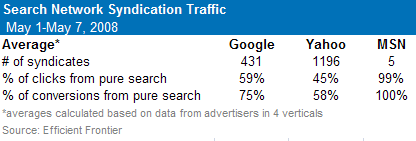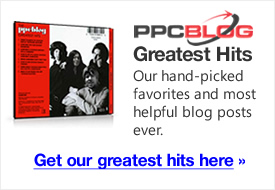New To Google Adwords? One aspect that will likely have you pulling your hair out is Google’s “quality score”.
Google’s quality score is a cryptic formula Google uses to help determine your keyword bid. The quality score affects your cost per click, eligibility to appear under a keyword term, estimates the cost of appearing on the first page of results, and affects how high your keyword is ranked.
Generally speaking, if your quality score is higher than that of your competitors, then you will be paying lower PPC prices.
How Can You Improve Your Quality Score?
Google, being Google, don’t spell it out. That would be too easy 🙂
Instead, they provide general guidelines to follow.
In summary, Google suggest that in order to improve your quality score, you need to maintain high click-thru rates, your account history needs to have high click thru rates, the click-thru rate to a specific URL needs to be high over time, and the keywords in the ad group must be relevant. They also mention “other relevance factors”, which could mean anything.
How Do I Find Out A Keywords Quality Score?
Each keyword term has a quality score. Google will list the quality score as being “Great”, “OK” or “Poor”.
Obviously, you want to have a “Great” quality score, and not an “ok” or “poor one”. So what seperates the three?
The most significant factors are relevance of your ads, your click-thru rate – especially your recent click-thru rate – and your account quality score. “Account quality” refers to the sum total of all the keyword quality scores within your account.
So, in order to achieve a “great” score, focus ruthlessly on raising your CTR, and don’t leave a lot of low quality keywords active in your account.
What Do I Do If My Minimum Bid Price Is Still Too High?
If your minimum bid is too high, take a close look at your landing page. Do you feature the same, or similar related keywords, on your landing page as featured in your ad?
Google’s landing page guidelines are here.
Besides relevance, make sure your page is original and contains substantial content. Avoid the “affiliate trap” of using pages solely as a means to direct people to a parent site. Finally, check basics, like ensuring the user can click back, don’t use pop-ups and avoid slow page load times.
Does Page Rank Affect My Quality Score?
Strange as it may seem, and even though Google denies it, many claim the the authority of the domain hosting the landing page does affect the quality score.
While there is a lot of debate about this aspect, placing your landing page on a reputable domain certainly can’t hurt and may well help, so if you do have the option place your landing page on a quality domain. Link to that landing page internally. Link out to reputable resources from your landing page.
Did Eric Schmidt let something slip when he said Google may use brands to clean up the internet cesspool? Could this also apply to Adwords?:
According to Google CEO Eric Schmidt, the Internet is a “cesspool” where false information thrives…..Schmidt gave the magazine publishers hope for their future. Brands, he said, are the way to rise above the cesspool, and of course he is right.
Do we know for sure? No, we don’t. We’ve seen anecdotal evidence suggesting that the credibility of the domain can affect the quality score, although it may just be a side effect of Google trying to weed out thin affiliates.
Try testing a landing page on a new domain vs an established credible domain, and see if you notice any difference in terms of your quality scores and bid prices. Have you noticed a difference to your quality scores if you place the landing page on a reputable domain vs a new domain, or a domain that doesn’t appear in Google’s index?
Do you have strong views either way? Let’s here ’em in the comments!
Be Careful Moving Keywords
We all need to optimize our campaigns, and doing so is a great way to ensure a higher quality score.
One thing you need to be careful of is moving keywords. Because keywords have a history, take special care not to delete them. Instead, use the Adwords Editor to cut keywords, lest you delete their quality history. See Google’s detailed instructions on moving keywords.





